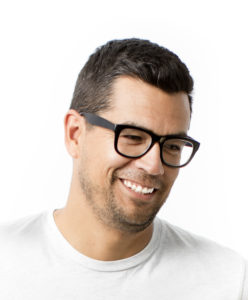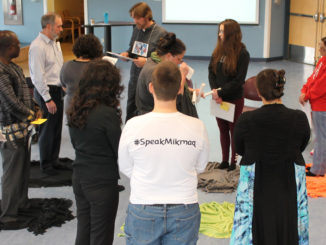Indigenous graphic novels introduced to province’s junior high students promotes historical significance.
Emily Lyver
Kicker
Tales from Shadow River is a five-part series of graphic novels that illustrates Newfoundland and Labrador’s Indigenous history and culture. The novels are being distributed to junior high schools across the province.
The stories centre around notable Indigenous figures such as war hero John Shiwak of Labrador, and healer and midwife Mary Webb from the west coast of Newfoundland, who delivered approximately 700 babies. Other stories focus on traditional practices such as the Innu caribou hunt.
The idea for these books was originally proposed almost two years ago by the Department of Education and Early Childhood Development. Bradley Clarke, director of programs and services, oversaw the project from start to finish.
“We wanted all of Newfoundland and Labrador students to learn a little bit more about our rich, Indigenous history,” said Clarke. “That was key. It’s key that all students recognize the value of these stories and the significance of Newfoundland and Labrador’s Indigenous culture and history.”
The department worked closely with the Aboriginal Education Advisory Committee – a committee of representatives from Indigenous groups throughout the province – for historical and cultural accuracy.
“When I was growing up, even as an Indigenous kid, I had no idea about Indigenous peoples and (their) cultures.”
“There’s a lot of debate about some of these characters and some of these stories,” said Clarke. “Did it really happen that way? Much of the history (is) passed down verbally.”
Because of the verbal history, he said, there was no definitive source.
“But, we always said upfront we were going to try to stick closely to what the actual stories were as best as we can determine.”
The books were then written by award-winning author David Alexander Robertson and illustrated by a variety of artists.
Robertson, who lives in Winnipeg, says he was immediately enthused about the project.
“I love learning about new stories and new people,” he said. “And I recognize the importance of educating kids about these histories and these cultures … Yeah, I was really excited to take part in the project; I was all guns blazing.”

With each story, Robertson worked with specific contacts and historical documents to make sure everything was as accurate as possible.
Part Cree on his father’s side, Robertson says he understands the importance of this project in educating all children.
“When I was growing up, even as an Indigenous kid, I had no idea about Indigenous peoples and (their) cultures. And so, for me, I was raised on a lot of stereotypes. I had a lot of negative preconceptions about Indigenous peoples … So, I’m encouraged to know that’s happening because when we’re learning these things, we’re not filling our brains with a lot of the negativity that comes from ignorance from that lack of knowledge. Instead, we’re learning truth.”
While these books are a small step forward in the grand scheme of Indigenous rights and awareness, Robertson says change happens over time.
“It happens with one act,” Robertson said. “It might just be one kid who learned something and shares it with their parents or with another friend, and then they share it, and so over time I think you’ll see change occur. But, it takes a long time, and I recognize that as well, but if we’re not doing the work, it’s not gonna happen.”




Be the first to comment